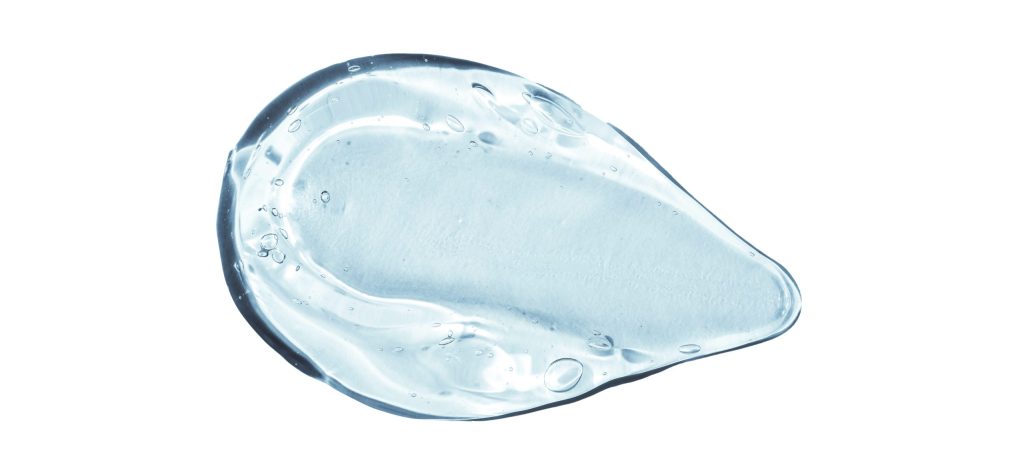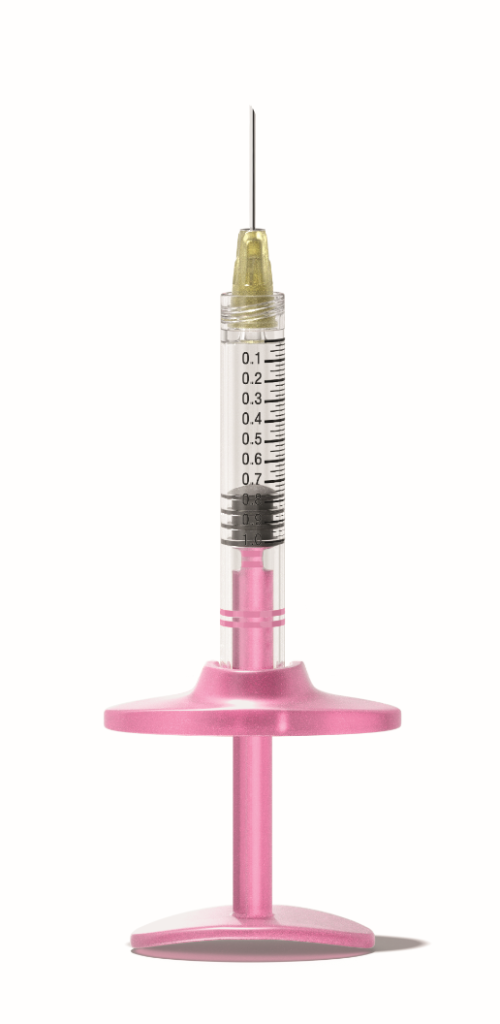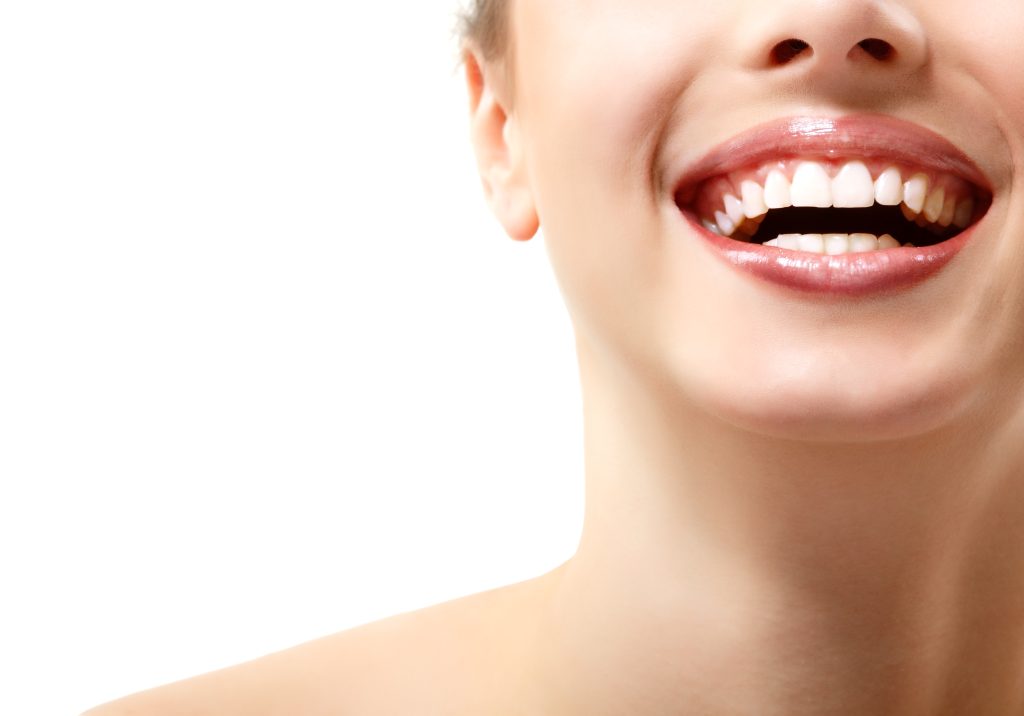Through injections with hyaluronic acid, lost volume in the face can be restored. Using sterile hyaluronic acid products, known as fillers, wrinkles are plumped up from the inside. The face regains its youthfulness and the contours appear fresh and vital again. At the same time, the filler treatment also offers the possibility to increase the moisture content in the skin, thus contributing to an overall refreshment and improvement of skin quality.
Important Facts
- Treatment duration: 15-30 minutes
- Anesthesia: none (a local anesthetic is already mixed into the hyaluronic acid used)
- Aftercare: possible local cooling, no local heat application such as solarium or sauna visits for about 1 week
- Result: Immediate
- Pain level: Low, only tiny punctures with very fine cannulas
- Social presentability: Immediate, however, small hematomas may form depending on the treated region, which subside quickly.
- Price: 350€ for the first vial (1ml), any additional vial needed in the same session 270€
What is Hyaluronic Acid
Hyaluronic acid is a substance found almost everywhere in the body, whose task is to bind water in the tissues. As a natural component of the skin, it provides youthfulness and freshness, moisture, elasticity, and vitality.
A single gram of hyaluronic acid can store up to six liters of water. No wonder, then, that our skin appears plumper the more of this substance it contains.
The younger the skin, the more hyaluronic acid the connective tissue cells produce. However, with increasing age, the skin’s own hyaluronic acid production gradually decreases. This process begins around the age of 25 and intensifies over the years. This is why children’s skin looks so much plumper and fresher than the skin of older people.
With age, not only does hyaluronic acid decrease in the face, but also subcutaneous fat tissue, leading to volume loss with, for example, deepening of nasolabial folds or drooping corners of the mouth. The face changes its shape and “slides” downwards. Additionally, the quality of the skin decreases. Fine superficial lines and wrinkles develop, which become deeper over time, for example vertically around the mouth area or on the cheek area.
All these are natural processes of skin aging, which are harmless in themselves, but many people desire an anti-aging effect.
Hyaluronic Acid Fillers
During the filler injection, sterile hyaluronic acid is introduced into the skin, thus rebuilding the volume lost over the years, or plumping up wrinkles from the inside with hyaluronic filler. The aging process can thus be reversed to a certain degree.
The beauty of this method is that even a single treatment with a small amount of hyaluronic acid leads to a significant facial rejuvenation of individual skin areas, and the treatment results can indeed be impressive.

When Does the Treatment Success Occur and How Long Does the Result Last
The result is immediately visible. The skin regains more elasticity and becomes smoother and more youthful. The contours of the face are significantly tightened and wrinkles are plumped up from the inside. As a natural component of the body, the hyaluronic acid integrates well into the tissue. Depending on the treated region and the type of filler used, the substance is largely resorbed by the body after 6 to 18 months.
Depending on the patient’s wishes, facial region, and depth of existing wrinkles, different products from various manufacturers are used to achieve an optimal and natural-looking result.
The introduced hyaluronic acid is gradually broken down by the body over time. The treatment can be repeated if desired.
For Which Regions is Wrinkle Treatment with Hyaluronic Acid Particularly Suitable?
The most common treatments in my practice are:
- Nasolabial folds (fold between the nostril and corner of the mouth)
- Vertical wrinkles around the mouth area (smoker's lines, pleated wrinkles)
- Modeling of facial contours
- Lip Augmentation
- Fine wrinkles in the cheek area
- Tear trough
- Volume loss in the midface
- Drooping Corners of the Mouth (Marionette Lines)

Special Considerations for Treating Various Regions with Hyaluronic Acid
Treatment of Nasolabial Folds
The filler injection of nasolabial folds, which are the lines that run from the nose to the corners of the mouth, is one of the most frequently requested procedures in my practice. However, caution is necessary here, as overfilled nasolabial folds can look unnatural and negatively impact facial beauty. Sometimes, instead of directly treating the nasolabial fold, it’s better to enhance the facial areas around the cheekbones and cheeks. This achieves a much more natural look, and although the effect is immediately visible, it’s not obvious that an injection for wrinkle treatment has been performed.
Lip Augmentation with Hyaluronic Acid

Another application area for hyaluronic acid fillers besides wrinkle treatments is lip injections. With the help of appropriate products specifically optimized for this area, it is possible to emphasize the lip contour and add volume to the lips without creating the dreaded ‘duck lips’ look. The goal is to achieve an aesthetically harmonious mouth with beautifully curved lips and a balanced proportion between upper and lower lip. It is particularly important here that the lip augmentation is done very carefully and not too much product is used to absolutely avoid an unnatural result.
Treatment of Tear Troughs with Hyaluronic Acid
Dark shadows under the eyes that give a tired appearance can also be treated with fillers if needed. With the help of a small amount of hyaluronic acid, these facial areas can be gently filled. The effect is often astonishing, regardless of the patient’s age. But caution: this treatment (as well as any injection with hyaluronic acid in general) should really only be performed by experienced experts who are well-versed in the procedure and perform it frequently. Not all patients are suitable for this. In particular, people who often suffer from swollen eyes should not be treated, as the results are not satisfactory in these cases. Also, too much volume should never be added, as this can result in unsightly eye bags. If the skin under the eyes is very loose and sagging, a lower eyelid surgery, known as lower blepharoplasty, is the better alternative.
The skin quality of the thin skin under the eyes can also be improved with PRP treatments. Experienced doctors can advise you well and tell you which method is best for you.
Frequently Asked Questions About Fillers (FAQ)
Is the treatment with hyaluronic acid painful?
Due to the addition of an anesthetic in the ampoules, the treatment is minimally painful. Of all treatments, the lip treatment is probably the most uncomfortable, as there are many nerve endings here, which is why we additionally apply a strong numbing cream beforehand in my practice. For particularly pain-sensitive patients, we have a few more tricks to make the treatment less uncomfortable.
How much hyaluronic acid is injected during a treatment?
This question cannot be answered generally at all. It depends on your wishes and expectations on one hand, and on the region and your individual anatomical conditions on the other. My personal opinion is that less is often more. Only in very rare cases would I inject more than 1ml of hyaluronic acid in one region in a single session. It’s better to build up the region gradually and touch up if necessary. This gives the tissue time to adapt well and avoids an unnatural appearance.
Can hyaluronic acid be dissolved if you don't like the result?
Hyaluronic acid can be dissolved using an enzyme called Hylase or Hyaluronidase. This is used either when the result is not satisfactory, or in case of unwanted side effects, such as small lumps. Nevertheless, the fact that hyaluronic acid can in principle be dissolved again should not lead to having the treatment done carelessly or with dubious providers.
On one hand, dissolving a poorly placed filler also involves costs, and on the other hand, I unfortunately have to turn away patients in my practice who approach me with the desire to dissolve unsightly filler results that were performed in other practices (partly abroad or by somewhat ‘questionable’ providers) because the result is anything but what was expected. The problem is that only pure hyaluronic acid can actually be dissolved again. If it’s not entirely clear what kind of filler was used because the patient doesn’t know and the previous practitioner is ‘untraceable’, unfortunately, dissolution with Hylase cannot be performed. Another reason to be very careful about where you get treated.
What alternatives are there to wrinkle injections with hyaluronic acid?
On one hand, there’s the injection of autologous fat, which is taken from another part of the body, often as part of liposuction. However, it should be mentioned that the results are not always entirely predictable, as only a part of the autologous fat grows and the rest is broken down. For this reason, more fat needs to be transplanted than required, and the final result can only be assessed after some time.
Furthermore, there are also injections with materials such as calcium hydroxylapatite or poly-L-lactic acid, like the biostimulator Sculptra, which stimulate the body’s own collagen synthesis and thus contribute to skin tightening.
In addition, there are various types of permanent fillers based on silicone, which actually belong to the past, as the disadvantages clearly outweigh the benefits and very unpleasant side effects can occur. I strongly advise against using such silicone materials for wrinkle treatments. Not only can they not be dissolved, but they sometimes unfortunately also have a tendency to ‘migrate’ and ‘slide’. Unfortunately, I occasionally see patients who have to live with the consequences of such treatments due to poor advice. Here, often only surgical removal of the poorly placed material by an experienced plastic surgeon is an option, and even then scars remain.
How long does the result of a hyaluronic acid injection last?
The answer to this question depends on several factors. Depending on which region was injected and what type of hyaluronic acid product was used, the result can last between 6 months and over a year.
In regions that move a lot, filler breaks down faster than in those where little movement takes place, such as in the tear trough. Soft fillers that are placed superficially have a shorter durability than firmer materials that are injected more deeply.
Which manufacturers of hyaluronic acid products are recommended?
Of course, I exclusively use highest quality hyaluronic acid from reputable manufacturers approved in the EU. In my opinion, different products are best suited for different regions, or for some regions, for example for the tear trough, some companies have actually developed special hyaluronic acid products that have exactly those properties that are best suited for this specific region. I strongly advise you to only have filler treatments performed by experienced doctors to ensure that only certified and safe materials are used.
What should be considered before a hyaluronic acid injection?
-
Patients should be healthy.
-
There should be no acute infections in the area to be treated, for example herpes infections for a lip injection.
-
In the 10 days prior to the planned treatment, no pain-relieving and fever-reducing medications such as aspirin, ibuprofen or diclofenac should have been taken. It is recommended to pause the intake of any dietary supplements and vitamins for a few days.
-
No antibiotics or cortisone intake 10 days before treatment.
-
You should avoid alcohol on the day before and on the day of treatment.
-
A gap of at least four weeks should be maintained from vaccinations.
-
If you are under therapy with strong blood-thinning medications, this should be discussed with your treating internist and a strict risk assessment should be carried out before treatment with hyaluronic acid products.
-
Dental treatments should have been at least two weeks ago (exception: normal oral hygiene)
What should be considered after treatment with hyaluronic acid?
-
Make-up should not be applied to the treated area until the following day at the earliest.
-
For one week after the injection, you should avoid sauna, steam bath or solarium and intensive sunbathing.
-
No cosmetic treatments such as lymphatic drainage, dermabrasion or permanent makeup in the treated area for two weeks.
-
Cooling is allowed.
-
No vaccinations in the next four weeks.
-
No alcohol on the day of treatment.
-
No dental treatments in the next two weeks.
-
No sports for 48 hours.
-
No kissing for 24 hours after lip injections
When can a treatment with hyaluronic acid not be performed?
In certain cases, an injection with hyaluronic acid cannot be performed. These include, for example:
-
Pregnancy
-
Breastfeeding
-
Patients under 18 years of age are not treated with hyaluronic acid without exception
-
Certain autoimmune diseases such as rheumatic diseases or lupus (SLE)
-
Acute or chronic infections
-
Untreated dental infections
-
Acute cold sores
-
Ongoing antibiotic therapy
-
Existing therapy with blood-thinning medications
-
Known allergy to hyaluronic acid or local anesthetics
-
Chemotherapy during the last 12 months
-
Known wound healing disorders
More specific details concerning your individual situation should be discussed with your treating physician in a personal consultation.
What side effects can occur after treatment with hyaluronic acid?
Occasionally, small hematomas, slight swelling, and minor pressure sensitivity in the treated area may occur. However, these symptoms usually subside after one to two days.
In rare cases, hyaluronic acid can cause an allergic reaction.
In isolated cases, especially if the practitioner is not sufficiently well-trained, vascular occlusions can also occur. Therefore, it is important to discuss all possible side effects with the treating doctor beforehand to ensure that the hyaluronic acid treatment is suitable for you.
Is special aftercare required at home after wrinkle treatment with hyaluronic acid?
Some patients find it pleasant to cool the treated area a bit at home. Your doctor can best advise you in your individual case. Makeup should not be applied to the treated area until the following day.
After a lip injection, you should refrain from kissing for 24 hours.
Am I socially presentable after a wrinkle injection with hyaluronic acid?
Since slight swelling or small bruises can occur after any injection, and especially after a lip injection with hyaluronic acid these can persist for several days, I recommend not scheduling the injection immediately before important social events. However, you can resume your normal daily activities right after the treatment without any problems.
Is hyaluronic acid allowed during pregnancy?
The answer to this question is a very clear NO, and the same applies to breastfeeding. Hyaluronic acid products are not approved for pregnant and breastfeeding women and should therefore not be injected. Also, dissolving hyaluronic acid with the substance Hylase is strictly prohibited during pregnancy.
How long does the treatment with hyaluronic acid take?
Depending on which region is being injected with hyaluronic acid, the treatment itself takes between 10 and 30 minutes. However, you should also plan time for the preceding consultation and information discussion, as well as for photo documentation. In total, you should therefore expect about 45 minutes to an hour for your visit.
Why are there different types of hyaluronic acid fillers?
Different hyaluronic acid products can vary in their physical properties, such as firmness or elasticity. Depending on which area is being injected and at what depth of the skin the material is placed, different product characteristics are required. For example, if I want to inject a highly mobile area like the lips, a filler material that doesn’t lose its shape during the many movements our lips make daily is important. If I want to treat very fine superficial wrinkles, I need a very soft filler that integrates well into the tissue and remains invisible even when placed very superficially. If, on the other hand, I want to emphasize the cheeks and cheekbones, a product with more firmness is needed to shape the tissue well.
Thin, older skin or a very delicate face can only tolerate softer fillers so that the material remains invisible.
For special areas such as the tear trough, it is particularly important to choose a product that does not store water afterwards to prevent unwanted swelling in the eye area.
A doctor with sufficient experience will select the optimal product depending on the area to be treated and the wishes and ideas of the patient.
Is a needle or a cannula used for wrinkle injections with hyaluronic acid?
This depends on the individual situation and is handled differently from case to case. A sharp needle allows for particularly precise injections, and the smallest amounts can be injected very superficially. A soft cannula, on the other hand, is less traumatic and allows for the treatment of larger areas and particularly delicate regions such as the tear trough.
What is the difference compared to wrinkle treatment with Botulinum toxin?
For wrinkles that are more caused by increased facial expressions (for example, frown lines or worry lines on the forehead), treatment with Botulinum toxin is the more suitable method than a hyaluronic filler. An injection with hyaluronic acid would not provide optimal results.
